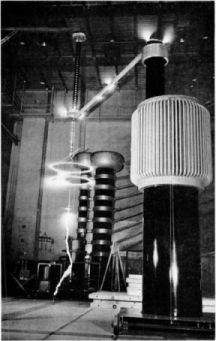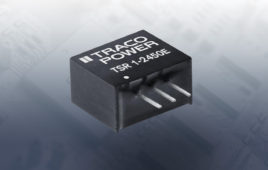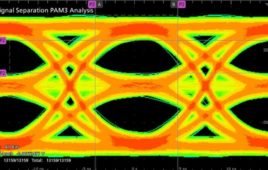Corona effect, also known as corona discharge, is primarily a high-voltage transmission line phenomenon, but it is also seen surrounding lightning rods.
Years ago, I was talking with a dairy farmer in Northern New England. We were inside his barn and had a clear view of the old farmhouse through the open door. It was mid-July and a heavy rainstorm was brewing. We could feel the strong electrically charged air. I saw pointed lightning rods arrayed along the ridge of the old house’s steep roof. Abruptly, they began to glow with an intense white light. It resembled cool white fluorescent lighting in an office building, and it was apparent that there was no great amount of heat involved. My neighbor was not at all worried. He told me it was a frequent occurrence prior to a heavy electrical storm.
We were observing corona discharge, a major concern of power line operators, where it is associated not with electrical storms, but instead with high-voltage electrical transmission, typically over 345 kV.

Corona discharges are visible around conductors energized by a 1.05 MV transformer in this NIST laboratory circa 1941.
The phenomenon, consisting of light and noise, results from electrical discharge. It is not a sudden breakdown of the dielectric zone as in a stroke of lightning or the arc in an automotive spark plug, but rather a slow acting and more persistent ionization of the air surrounding an electrode or conductor that is electrically charged to a high level with respect to the adjacent region.
This ionization arises when the electrode or conductor has a sharp point or surface irregularity that concentrates the electrical charge. Electrons or charged ions flow out into the adjacent region, ionizing the surrounding fluid or gas and causing it to glow. Due to fluctuating air motion, a distinctive hissing or frying sound may be heard. There is generally not a great temperature rise, but electromagnetic interference may be observed at close range.
Corona discharge is intentionally used in certain industrial processes including ozone production and electrostatic printing. But generally, it is considered harmful because it involves substantial power loss and a hazard to nearby people and equipment because of toxic and corrosive ozone emissions. For this reason, power line designers and operators strive to eliminate or minimize corona discharge surrounding high-voltage power lines. This is done by avoiding sharp protrusions that would concentrate electric charge at discrete locations.
During heavy storms, raindrops on conductors and insulators can have the effect of concentrating electric charges, setting the stage for corona discharge. Correct design and maintenance procedures can prevent local charge accumulations and resulting corona discharge.
St. Elmo’s fire is the result of electrical discharge into the surrounding region from a pointed object. It is a variety of corona discharge.
Old-time sailors such as those depicted in Herman Melville’s Moby-Dick were a suspicious lot. Seeing this luminous discharge about the mast of a sailing ship during stormy weather, they took it as an omen that the danger was past and they were saved from a watery death.
St. Elmo’s fire is sometimes seen as a cool luminescence appearing to emanate from the tips of cattle’s horns or from lightning rods. It is not an abrupt arcing discharge like a bolt of lightning, but rather a relatively long-lasting glow. It is not unusual to see St. Elmo’s fire during or directly before a powerful electrical storm. It may also accompany a volcanic eruption or thermonuclear explosion.
The material that is seen to glow in the region of an electrically charged object is known as plasma. It is produced in stars, lightning, and a high-temperature flame. Plasma is a fourth state or phase of matter, with properties that are different from a solid, liquid or gas. If a gas is heated above a critical temperature or subjected to a sufficiently strong magnetic field, the number of bound electrons is altered. Positive or negative ions are created. The resulting plasma resembles a gas in that it has no definite volume or shape unless enclosed in a container. But because it is such an electrically active substance, its properties are quite different from those of a gas.
In the universe, plasma is more abundant than the other phases of matter. Despite being composed of positive or negative ions, as a whole the material is electrically neutral. Charge carriers move about within the plasma, becoming in essence electrical current with accompanying magnetic fields. These fields interact and are organized. This accounts for the emission of visible light and the otherworldly appearance of St. Elmo’s fire.
The post The difference between corona effect and St. Elmo’s fire appeared first on Test & Measurement Tips.
Filed Under: Test & Measurement Tips




